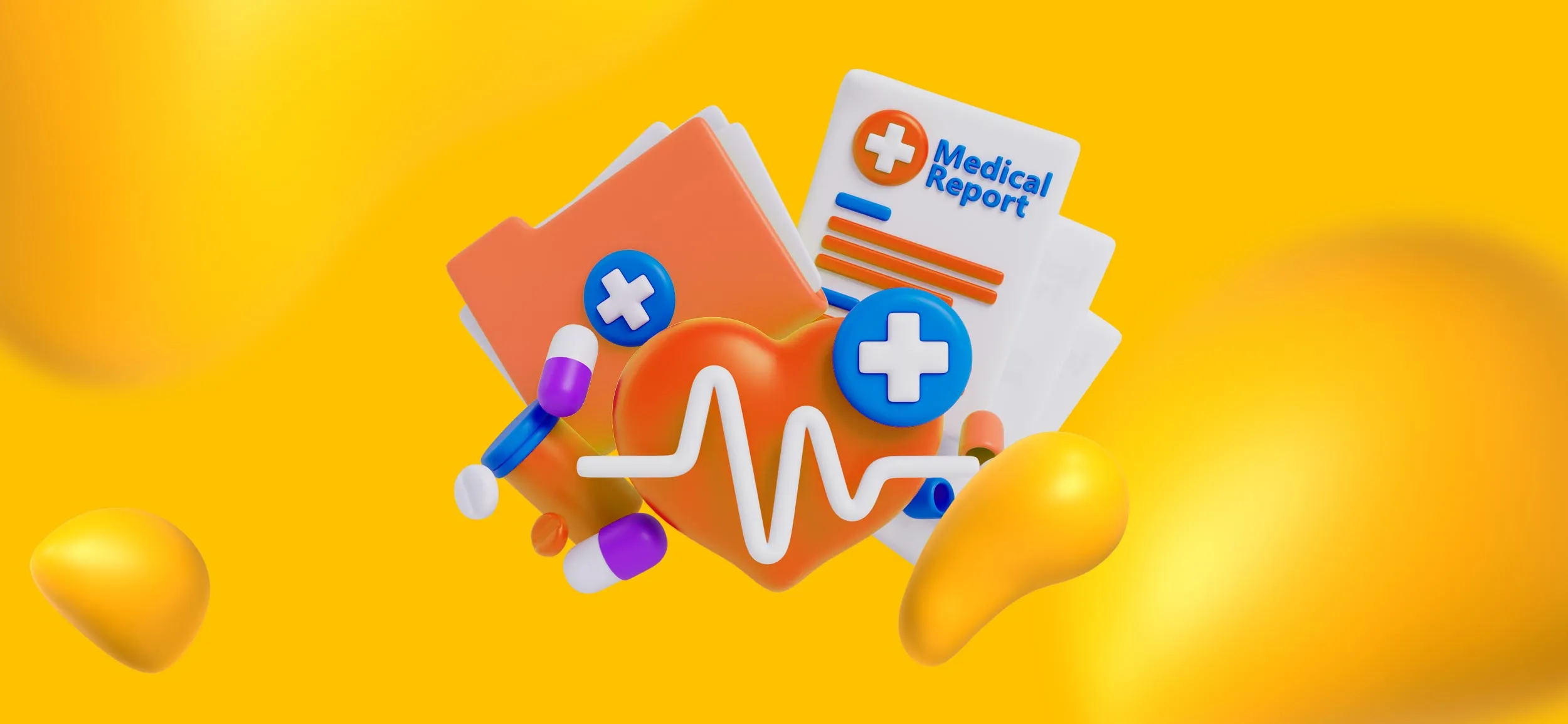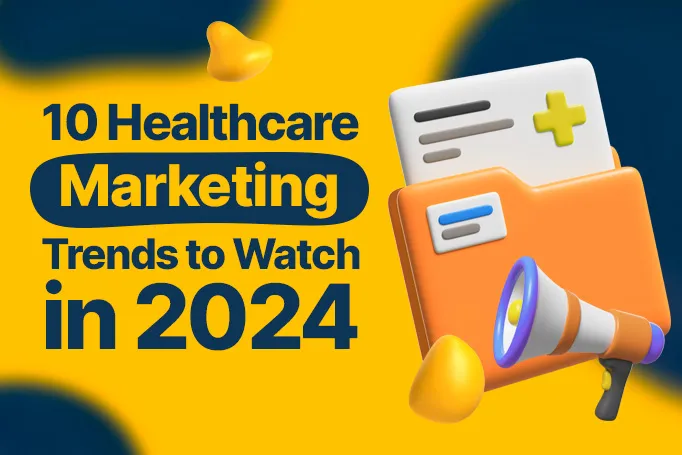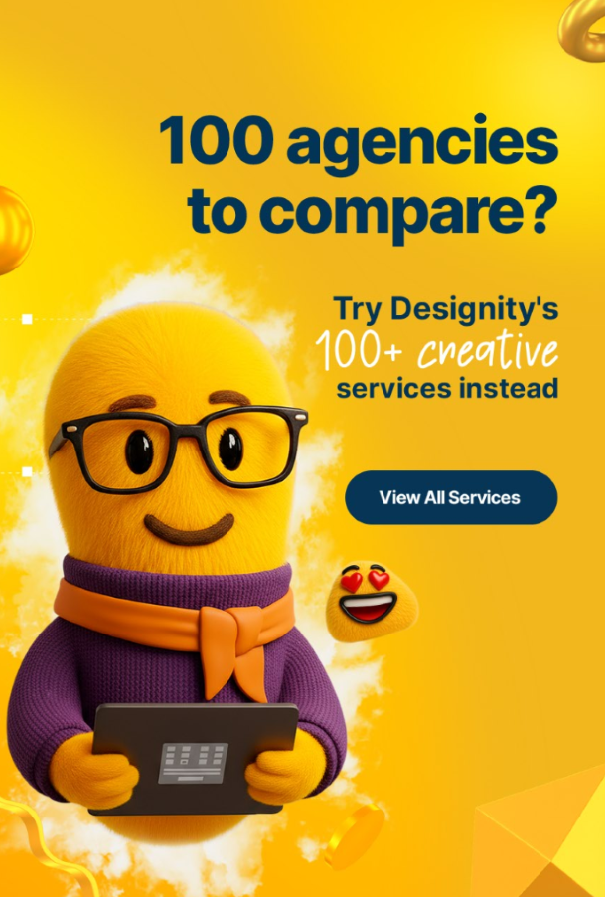2024 is chugging along and now that we’re a quarter of the way into it, we’ve been noticing some emerging trends in healthcare marketing.
And if you’re a healthcare marketer or otherwise involved in the industry, this is the perfect time to take a second to stop and assess your surroundings and make sure your marketing efforts and patient engagement strategies are going the way you want them to go.
We’ll even make it easy for you by breaking it down.
We’ve done the research so that we can bring you today’s blog; a collection of the top 10 trends that we predict will be shaping the healthcare marketing industry in 2024 (and beyond!).
So, whether you’re a marketer for a healthcare clinic, supplier, health insurance brand, or anyone else in the health system, grab up a notepad and let’s dive in so you can stay ahead of the curve, learn to lean into these trends for optimal impact, and crush all of your 2024 goals!
The Evolving Landscape of Healthcare Marketing
No one would blame you if you admitted it was a difficult task keeping up with such a fast-moving industry like healthcare marketing.
But now, more than ever, the healthcare industry is undergoing some serious changes and, if you want your brand to succeed, it’s important to keep up, stay agile, and stay informed.
So, what makes healthcare such a rapidly evolving field?
Here are some of the things influencing the healthcare landscape in 2024:
- Technological Advancements — The surge in AI, machine learning, and big data analytics is transforming healthcare marketing by allowing for more tailored, personalized strategies and more efficient data handling. These technologies make interaction easier between your brand and the customer, making for more precise marketing.
- Shifts in Consumer Behavior — With more individuals turning to digital resources for healthcare information and services, consumer expectations have shifted toward what offers greater convenience and personalization. This means marketers have to refine their approach to effectively meet these new consumer needs.
- Regulatory Changes — Recent updates in privacy regulations like GDPR and HIPAA have made an impact on marketing strategies by reshaping how patient data is managed.
- Integration of Traditional and Digital Marketing — Combining digital techniques with traditional marketing methods gives you a broader reach and the benefits of both worlds for more reach.
- Social Media — Social media has become a valuable tool in healthcare marketing, letting brands easily engage with healthcare consumers and keep them updated in real time.
- Impact of COVID-19 — The lasting effects of the pandemic have shifted healthcare marketing, most notably through the rise of telehealth appointments and greater focus on crisis communication. These developments have introduced new standards and expectations in healthcare services.
- Sustainability and Ethical Marketing — Increasing demands for corporate social responsibility require healthcare organizations to adopt more sustainable practices and ethical marketing.
10 Trends Shaping Healthcare Marketing in 2024

So, to rise above the challenges and put your healthcare brand out there for prospective patients and clients to discover and build long-term relationships with, here are 10 trends we expect to shape healthcare marketing in 2024 and beyond!
Have a look below and see how you can incorporate this knowledge and insights into your existing healthcare marketing strategies.
1. Personalization and Tailored Content
With so many choices out there, you’ve got to make your patients and consumers feel valued. And if your brand can’t make them feel like more than a number, they’ll find someplace that does!
Here are some tips to personalize your content so that it better resonates with current and prospective patients, builds trust in your brand, and encourages them to stick with you for their healthcare needs!
- Use Patient Data — Clinics should use data from patient visits and histories to customize their communications. For instance, sending targeted health tips and appointment reminders based on personal medical records or past consultations can make a big difference.
- Segment Your Audience — Break down your base into distinct groups by demographics, needs, conditions, and other preferences. Then, create messages that specifically cater to the interests and needs of each segment to make your communication more relevant and engaging.
- Engage Through Multiple Channels — Connect with patients wherever it is they spend their time, whether it’s through emails, social media, or your clinic’s mobile app.
- Interactive Content — Interactive tools like health quizzes, risk assessments, or personal health calculators on your website are great tools for engagement. They can also offer personalized results and advice.
- Patient Testimonials and Stories — Showcasing patient stories and testimonials that reflect a range of experiences can demonstrate the benefits of your healthcare services and add a personal touch that potential patients can relate to.
- Feedback and Continuous Improvement — Seek out and value feedback from your patients to find ways to enhance your services and communication and refine your approach.
2. A Rise in Telehealth
The Covid 19 pandemic transformed many previously uncommon practices into part of our daily routine, including having a bottle of hand sanitizer on us at all times, wearing masks in public, and telehealth appointments.
It didn’t take long for the public to realize that by meeting doctors from the comfort of our own homes, they didn’t have to risk spreading disease, sit in traffic, or sit in waiting rooms. This added comfort and convenience led many to prefer telehealth appointments (for certain conditions) and not want to give them up once the quarantine was lifted.
Do you blame them? Given all of these benefits, we expect this trend to continue, particularly among elderly or disabled patients who prefer the ease and convenience of virtual doctor visits.
To take advantage, clinics should invest in reliable, user-friendly telehealth platforms that make it easy to receive care virtually and improve the patient experience. Your marketing efforts should also focus on educating your patients about the availability of your telehealth services, highlighting features like secure video conferences, easy appointment scheduling, and direct messaging with their providers.
3. AI and Online Scheduling

If things keep going at the rate that they’re going (and they almost certainly will), the use of AI in businesses and marketing will only increase with each passing year.
With advancements in AI technology showing no signs of slowing down, expect to see an increasing use of AI in everything from:
- Online Scheduling Platforms — AI will continue to be used to boost the efficiency of booking and scheduling systems across healthcare facilities, including hospitals, clinics, and specialty care centers.
- Administrative Automation — More and more healthcare organizations from huge big-city hospitals to medical equipment suppliers, will use AI for their routine administrative tasks to streamline workflow and decrease the chance of human error.
- Data Analysis — AI is capable of handling vast amounts of data, including patient demographics, medical histories, and engagement metrics. Hospitals, clinics, insurance companies, and pharmaceutical brands can use these insights to provide more personalized and relevant content that optimizes their marketing strategies.
- AI-Powered Chatbots — These AI helpers are being used on websites all across the healthcare industry, from insurance providers to tech providers. They offer real-time assistance to help guide users, answer questions, and even schedule appointments during off hours.
4. Omnichannel Marketing
Your current and prospective patients and consumers see you from a variety of touchpoints, so why not put yourself everywhere they are?
That’s what more and more healthcare brands are choosing to do, making omnichannel marketing a trend we expect to continue to grow in 2024.
Omnichannel marketing works because it makes for a more seamless experience across all channels, online and offline. By integrating these physical and digital touchpoints, you provide patients and consumers with consistent messaging and the best of both worlds throughout their entire experience.
Here is a list of some common channels you can use to reach all of your audience:
- Websites — As a central hub for information, patient portals, and resources.
- Mobile Apps — For appointment scheduling, health tracking, and personalized notifications.
- Social Media — Platforms like Facebook, Instagram, Twitter, and LinkedIn work especially well for engagement and content distribution.
- Email Campaigns — Use email marketing for personalized email communications for appointment reminders, health tips, and newsletters.
- Text Messaging (SMS) — Text messages make it easy to send immediate alerts, reminders, and follow-ups.
- In-Person Interactions — Don't forget the personal touch! Direct engagement through clinics, hospitals, and community health events is just what some consumers are looking for.
- Live Chat and Chatbots — These messaging tools provide real-time online support and automated responses on websites and apps.
- Telehealth Services — Video consultations and online health assessments can also provide a means of promoting additional services.
- Digital Advertising — Use targeted ads on search engines, social media, and partner websites.
- Print Materials — Use brochures, flyers, and posters for offline marketing.
- Webinars and Virtual Events — Online seminars and other events for patient education can boost engagement. Promote them on social media, in your office, and through email campaigns.
5. A Digital Transformation
Ever since the internet boom of the late 90s, healthcare has become increasingly more digital.
A website just isn’t enough in 2024. If you want your brand to stay up-to-date and continue meeting your audience’s needs, you’re going to have to be on every digital channel, from websites to mobile apps, social media, and beyond!
Expect to see more and more healthcare brands expanding their marketing efforts into digital channels like augmented reality, virtual reality, and Web3.
And as healthcare brands venture more into these digital channels, creating more awareness and healthcare options than ever before, the need to build credibility and trust in your particular healthcare brand is more important than ever.
Keep track of your online digital reputation and don’t just keep up with the digital revolution, use it to your advantage. Address any negative feedback that’s left, promote your positive patient reviews and results, and engage positively with your community to show them that the lines of communication are always open and that you’re a healthcare brand they can trust!
6. Inclusivity and Accessibility
As the world becomes more interconnected than ever before, we predict there to be an increased focus on creating healthcare marketing campaigns that cater to diverse populations.
Expect to see more accessibility features on digital platforms and other communication channels, and for healthcare services to focus on their inclusivity and accessibility to individuals with disabilities.
Here are some ways you can start incorporating inclusivity and accessibility into your campaigns now:
- Website Accessibility Improvements — Make sure that your website meets Web Content Accessibility Guidelines (WCAG) by including features like text-to-speech, high-contrast text options, and easy navigation for those with motor disabilities.
- Multilingual Content — Offer marketing materials, websites, and patient communications in multiple languages to accommodate non-English speakers and reduce language barriers so that everyone can receive care, regardless of background.
- Culturally Relevant Marketing — Tailor your marketing messages to reflect the cultural, ethnic, and religious values of the communities you serve to show respect and understanding of their needs and preferences.
- Inclusive Visual Content — Use images and videos in your marketing that represent a diverse range of people, including those with disabilities, different racial and ethnic backgrounds, ages, and body types.
- Staff Training — Provide regular training for your staff on inclusivity and accessibility to cover best practices for communicating effectively and respectfully with people from all walks of life and abilities.
- Feedback Mechanisms — Put systems in place to gather feedback from patients about how effectively your services meet their accessibility and inclusivity needs. This feedback can be invaluable for refining your approach and allowing for continuous improvement.
*For more tips on multicultural marketing, click here for our recent blog!
7. Prioritization of Data Privacy

Patient privacy and security protocols have always been a priority in healthcare marketing but expect this to ramp up in 2024 as healthcare brands strive to safeguard complex marketing info and electronic health records while still complying with regulations like GDPR and HIPAA.
Healthcare brands will also look to empower their patients by providing more transparency for data collection, usage, and storage, as well as giving them more control over their data for transparency and accountability.
To get on board, you’ll want to invest in advanced cybersecurity tech and data management systems. These technologies are designed to protect health records and data from potential breaches, particularly blockchain technology, which offers a hack-proof way to manage health records and protect your data integrity.
8. Community-Based Marketing Efforts
If your healthcare brand is a brick-and-mortar clinic, then it’s surrounded by a community of potential patients and loyal brand ambassadors.
To be able to tap into this resource, many brands are turning to community-based marketing efforts, a trend we expect to see more and more of in 2024 and beyond.
These efforts can help your brand reach underserved populations and help them address specific health needs, making your brand a more visible and active member of the community. Plus, implementing some community health programs also has the double benefit of improving the health of your community and promoting preventive care. Everybody wins.
If you’re looking for ways to get started, here are some ideas for how to get your brand to the people:
- Health Fairs — Participate in or sponsor local health fairs where you can offer free screenings, health education, and consultations.
- Workshops and Seminars — Host workshops or seminars on important health topics, such as nutrition, mental health, or chronic disease management, that can benefit the local community.
- Partnerships with Schools — Collaborate with local schools to provide health education to students and parents, which can include topics like hygiene, physical activity, and healthy eating.
- Fitness Challenges — Organize community fitness challenges or group activities that promote a healthy lifestyle and engage people in a fun and interactive way.
- Support Local Events — Support local sports teams, cultural events, or community groups either through sponsorship or providing health services at these events.
- Mobile Health Clinics — Deploy mobile health clinics to schools, churches, or community centers in underserved areas to provide essential services like vaccinations, eye exams, health checks, and educational sessions.
9. Wearable Technology
Fitness trackers, smartwatches, health monitoring apps … we see these devices everywhere and they’re not just becoming more common as accessories but as important parts of healthcare marketing campaigns in 2024 and beyond.
These wearable devices provide a treasure trove of data that can allow marketers to gain better insights into their health, interests, and preferences, in real time and use that insight to create highly personalized marketing strategies that address their specific needs and lifestyles.
And because they track health metrics and fitness, they can also be used as part of campaigns by introducing things like motivational health challenges, rewards programs, and health tips into users’ daily routines!
10. Increase in Social Media Marketing
With each passing year, social media becomes increasingly more popular for healthcare marketing and 2024 is shaping up to be no exception.
Its ability to provide ways to engage with patients in real-time and provide valuable health information via content marketing makes it a very powerful tool for marketers and if your brand doesn’t have a strong social media presence, it’s time you did.
Social media’s wide reach makes it much easier to spread brand awareness through insightful posts and valuable and engaging content. This also positions your clinic as a go-to resource for current and prospective patients both, boosting your credibility and drawing in more new patients.
It also provides a platform for targeted ads that are tailored specifically to certain demographics of your audience to increase the overall efficiency and effectiveness of your marketing campaigns.
<div class="c-blog_comp-cta cc-component-1"><div class="c-blog_comp-cta-left"><div class="c-blog_comp-cta-left-wrap"><img src="https://global-uploads.webflow.com/61cdf3c5e0b8155f19e0105b/6369722e59155470b6840033_Potential-clients.png" loading="lazy" alt="" class="c-blog_comp-cta-left-img"></div></div><div class="c-blog_comp-cta-right"><div class="c-blog_comp-content"><div class="c-text-wrapper cc-mb-32"><div class="c-title-4 cc-bold"><strong>Want to save money without sacrificing the quality?</strong></div></div><div class="c-text-wrapper"><div class="c-text-2">Say goodbye to traditional, expensive agencies and unreliable marketplaces. Say hello to Designity.<br></div></div></div><div class="c-blog_comp-wrapper"><a href="/pricing" target="_blank" class="c-button cc-primary cc-inverted w-button"><strong>Get Your 2-Week Trial</strong></a></div></div></div>
Is Your Brand Ready for 2024 and Beyond?
It’s helpful to know what’s coming so that your brand can adequately prepare.
But sometimes, it’s not enough.
And if your brand is willing to implement the 10 trends we’ve listed above, only you lack the resources, creative talent, and time to create all of the assets you’ll need for successful campaigns and the integration of new, more innovative tech, then you might be left wishing you had a way.
Luckily, we’re here to tell you that you do.
Designity is made up of the top 3% of US-based creative talent, everyone from copywriters to graphic designers, social media experts, web developers, and more; everyone you’d need on your team to create winning marketing campaigns that follow current trends and get you the results your healthcare brand is looking for.
And with a dedicated Creative Director to lead your account, manage your creative team, and offer strategy and guidance based on years of marketing and design experience, you can start building out your next campaign faster than you think.
So, if you’re ready to jump on 2024’s trends while they’re still hot, we’re ready to help you do it.
Why not have a look at our healthcare portfolio and see how Designity is equipped to help your brand boost its online presence, launch new products, and start getting your brand the attention and success it deserves?
And when you’re ready, click here to book your demo call so we can get you started with a two-week, no-obligation trial to test drive our services risk-free.
Is your brand ready for 2024 and beyond?










